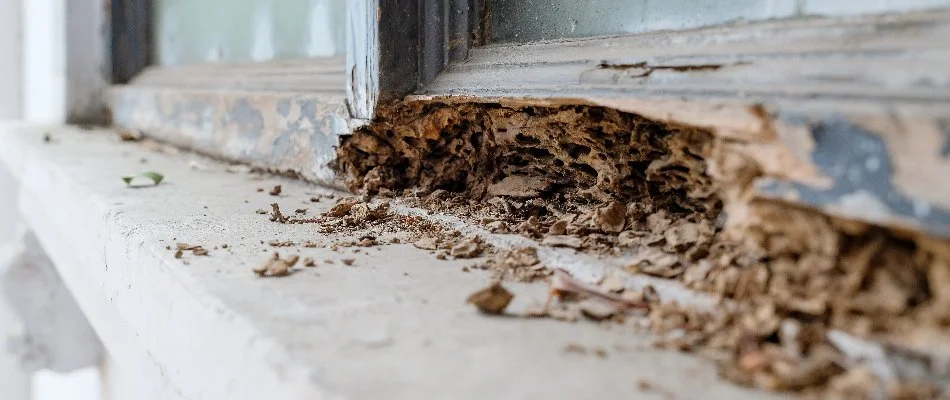Termites are a common occurrence here in Texas! When you call our professionals for a termite inspection in your home, you can expect that we will be thorough and check everything on your property, both indoors and outdoors, looking for areas with a conducive environment for termites and mud tubing. Inside your home, we'll check out your window sills, crown molding, ceiling, cabinet under the sink, and more. Outside, we'll focus on your foundation, siding, garage, and fence for indications of termite damage. After the inspection, our team will go over everything with you, discuss issues that we noticed, and suggest termite treatment options.
What are the primary things that we check out during a termite inspection?
A termite inspection service involves a thorough process of checking the interior and exterior of your home to identify signs of termite damage and infestation. This inspection will also identify conducive conditions in your home that are perfect for termites. Primarily, the main thing that professionals look for during a termite inspection is water. They follow the water because wherever there is moisture, termites are more likely to be there. That's because these wood-destroying pests like and thrive in moist areas.
This inspection will also involve looking out for mud tubing. This is a tunnel of mud usually found on walls and ceilings with recent or ongoing termite activity. Cracking paint on window sills and damaged baseboards are also top areas that are checked during a termite inspection.
The Interior Termite Inspection

During the interior inspection, each room will be checked for signs of termite damage. This has to be as thorough and meticulous as possible to ensure no spot is missed! Below are areas and points of concern that are inspected inside your home:
- Window sills and seats: Windows tend to collect a lot of moisture, which is a necessity for termite survival. Window sills, trims, and seats will be checked as these are easy access to termites. Hollow and flaky wood or wood with cracked paint are signs of termite damage.
- Crown moldings and ceilings: These areas will be checked for water damage, especially ceilings that are close to walls with water pipes as moisture from the pipes can create a conducive environment for termites.
- Laundry room: The water lines and drain behind your washer will be checked.
- Under the sink: Any water damage from the pipes under your sink can create a moist environment that is perfect for termites.
- Garage: Termites are often found in garages with water heaters because the moisture helps them survive.
- Exterior doors: The framework of exterior doors is a common place for termite damage because water can get into it and termites can easily access it.
- Bathrooms: Areas around your bathtub, shower, and toilet, including your baseboards, will be inspected for signs of termites.
- Fireplaces: Termites can get into your fireplace due to cracks in the foundation, so it's best to check it as well.
The Exterior Termite Inspection
Outside your home, the main concern is your foundation and the sidings of your home. Cracks in the foundation are entry points for termites to get into your home, as well as corners in the foundation with overpoured concrete. Sidings will also be inspected. There should be a gap between your siding and the soil to minimize potential contact between termites and your property. Trims in your garage and your fences are also possible points where termites could enter.
After the termite inspection, the crew will go over everything with you.
Once the service is done, the inspection crew will inform you of the results. They will discuss any damage that they have identified, including which areas of your home are most problematic. They will also suggest which treatment option is the best for your property's needs. They can suggest spot treatment if the termite issue is minimal and not widespread. However, if they see termite damage in different areas of your home, they will likely suggest a full termite treatment. A full termite treatment can include trenching outside, applying treatment around the foundation, drilling into secondary foundations, and treating the interior walls.
Call us today to sign up for our termite control service!
If you suspect your house has termites, our professionals are the best team you can get to tackle the issue. Our team at CitiTurf offers our termite control service to residential properties in Plano, TX, and surrounding areas, like Allen, Frisco, and McKinney. This service involves an inspection to identify areas of concern and signs of termite damage so we know the best approach to get rid of the termites. We offer one-time treatments but we also offer yearly inspections, meaning your home will be monitored every year by our experts! Give our team a call today at 972-516-0001 to sign up for our termite control service.







